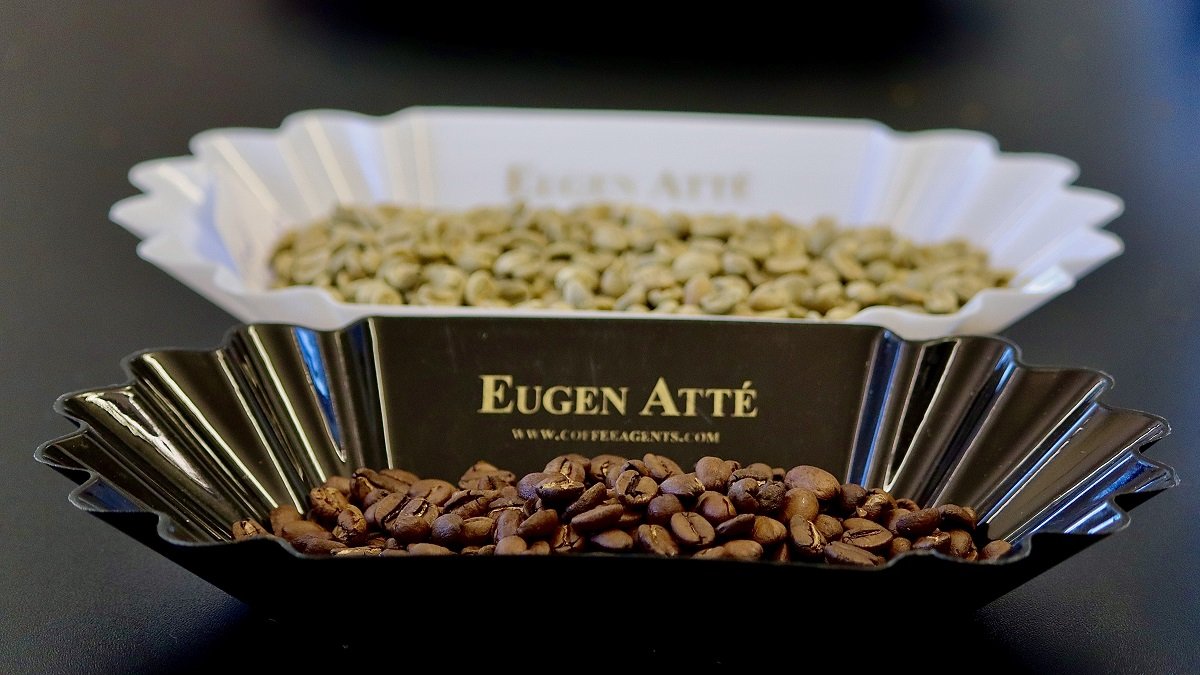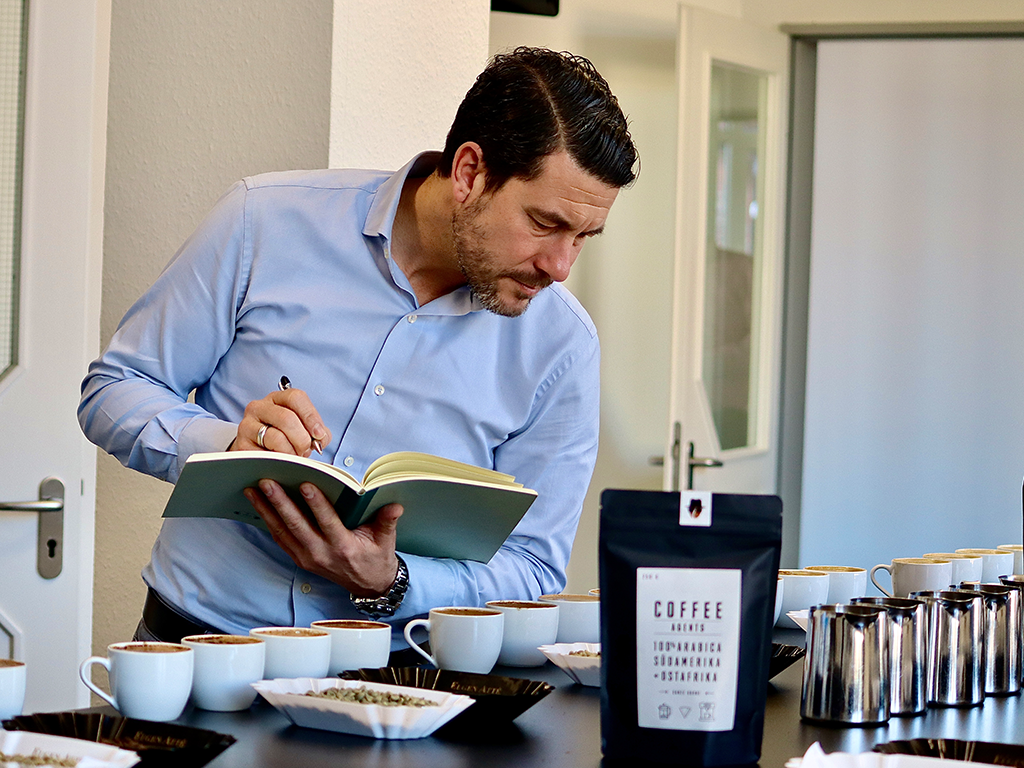Mit Herz und Leidenschaft
Wir kennen (fast) jede Bohne persönlich
With heart and passion
We know (almost) every bean personally



Coffee-Cupping - so nennen wir Kaffeeprofis das Verfahren, mit dem wir die Qualität des Kaffees anhand verschiedener Kriterien überprüfen und bewerten. Nur so können wir feststellen, ob der Kaffee unseren hohen Anforderungen und Ansprüchen entspricht. Unsere Bewertung erfolgt unter anderem auf Reinheit, Körper und Säure sowie herausragende Aromen, Mundgefühl, Nachgeschmack und Geschmacksnoten. Faktoren wie zum Beispiel Klima, Höhenlage und Bodenbeschaffenheit im Anbauland sind für das Aroma von großer Bedeutung. Um dies alles präzise beurteilen zu können, schauen wir uns zunächst das Bohnenbild an und unsere Nasen kommen zum ersten Mal zum Einsatz. Als Profis wollen wir nicht nur wissen wie der Kaffee schmeckt, sondern auch wie er riecht.
Die Kaffeebohnen werden von uns mit Liebe geröstet und von Hand gemahlen, damit sämtliche Stoffe gelöst werden, die wir bewerten möchten. Um Abweichungen festzustellen, stellen wir bei der Verkostung immer dieselben Standards her, das heißt, die Wasser- und Kaffeemehlmenge ist immer gleich. Nach dem Befüllen der Tassen mit dem Kaffeemehl schnüffeln wir bereits was das Zeug hält. Im nächsten Schritt gießen wir das Wasser direkt auf das Kaffeemehl, in Verbindung mit dem Wasser treten aus dem Kaffee noch einmal ganz andere Aromen hervor, je weiter der Kaffee abkühlt, desto mehr und vielfältiger sind sie. Nach 15 Minuten fangen wir dann beherzt und leidenschaftlich mit dem sogenannten Cupping-Löffel an zu schlürfen. Mit einer gehörigen Portion Luft schmecken wir so alle Noten und Nuancen heraus und geben letztendlich unsere Bewertung ab.
Kaffee schmeckt eben nicht immer gleich…
Coffee Cupping - this is what we coffee professionals call the process by which we check and evaluate the quality of coffee based on various criteria. Only in this way can we determine whether the coffee meets our high standards and requirements. Our evaluation includes factors such as purity, body, and acidity, as well as outstanding aromas, mouthfeel, aftertaste, and flavor notes. Factors such as climate, altitude, and soil conditions in the growing country are of great importance for the aroma. To assess all of this precisely, we first examine the appearance of the beans, and our noses come into play for the first time. As professionals, we not only want to know how the coffee tastes but also how it smells.
We roast the coffee beans with love and grind them by hand to release all the substances we want to evaluate. To detect any deviations, we always maintain the same standards during tasting, meaning the amount of water and coffee grounds is always the same. After filling the cups with the coffee grounds, we sniff intensely. In the next step, we pour water directly onto the coffee grounds, and in combination with the water, the coffee releases different aromas. The more the coffee cools, the more varied and numerous the aromas become. After 15 minutes, we enthusiastically and passionately start slurping with the so-called cupping spoon. With a generous amount of air, we taste all the notes and nuances and finally give our assessment.
Coffee doesn't always taste the same…









